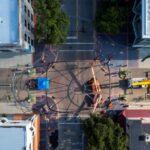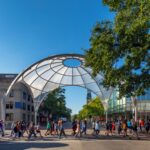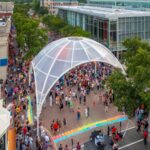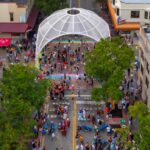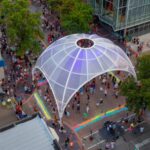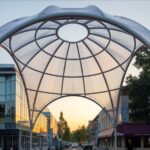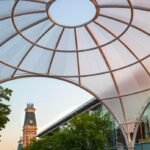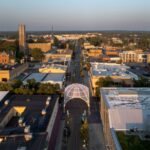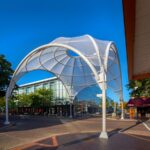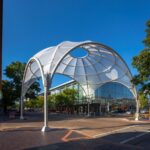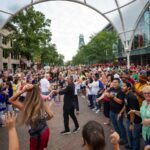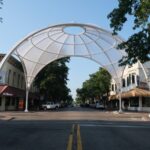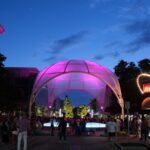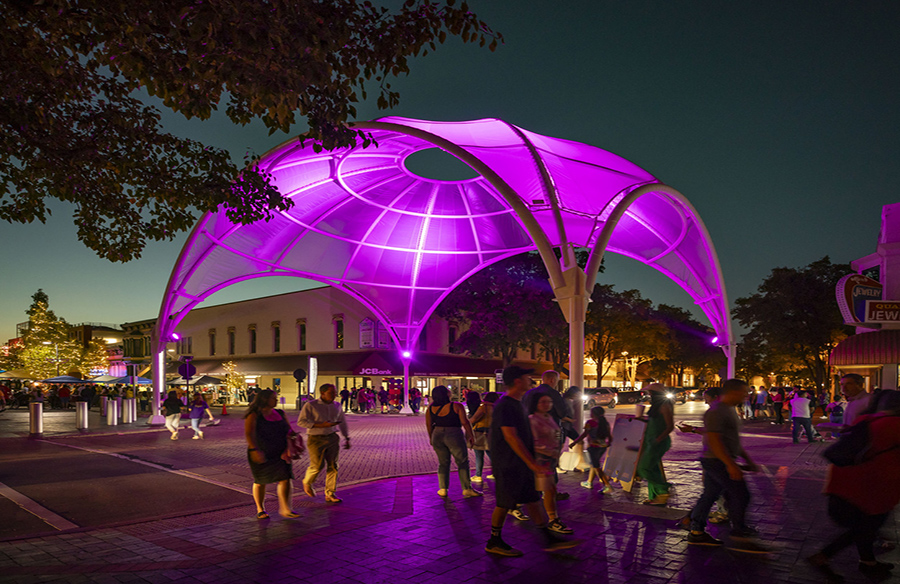
In 2023, PAU – Practice for Architecture and Urbanism, led by Vishaan Chakrabarti, was awarded the Miller Prize for their project “InterOculus” in Columbus, United States. Selected as part of the annual theme “Public by Design” and tasked with the additional prompt of “Civic Infrastructure,” PAU aimed to revitalize public interest and engagement in downtown Columbus, Indiana. InterOculus, situated at the intersection of Washington and Fourth Streets, reimagines conventional streetlight poles as a dynamic civic focal point, fostering cultural exchange and community interaction.
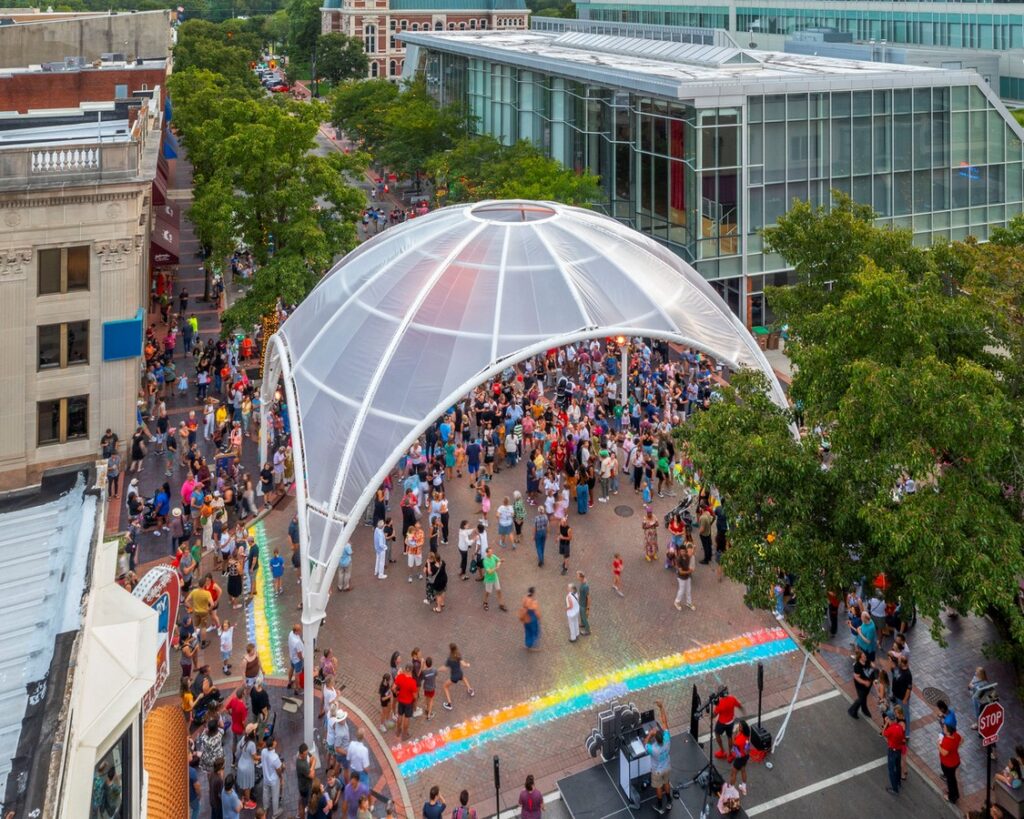
Bridging Communities Through Design
PAU’s design process for InterOculus was deeply collaborative, incorporating feedback from residents, business owners, workers, and students. Initially conceived as a temporary installation, the project garnered widespread acclaim and calls for its permanence. By transforming mundane infrastructure into an inviting public space, InterOculus breathes new life into downtown Columbus, encouraging people to gather, socialize, and patronize local businesses.
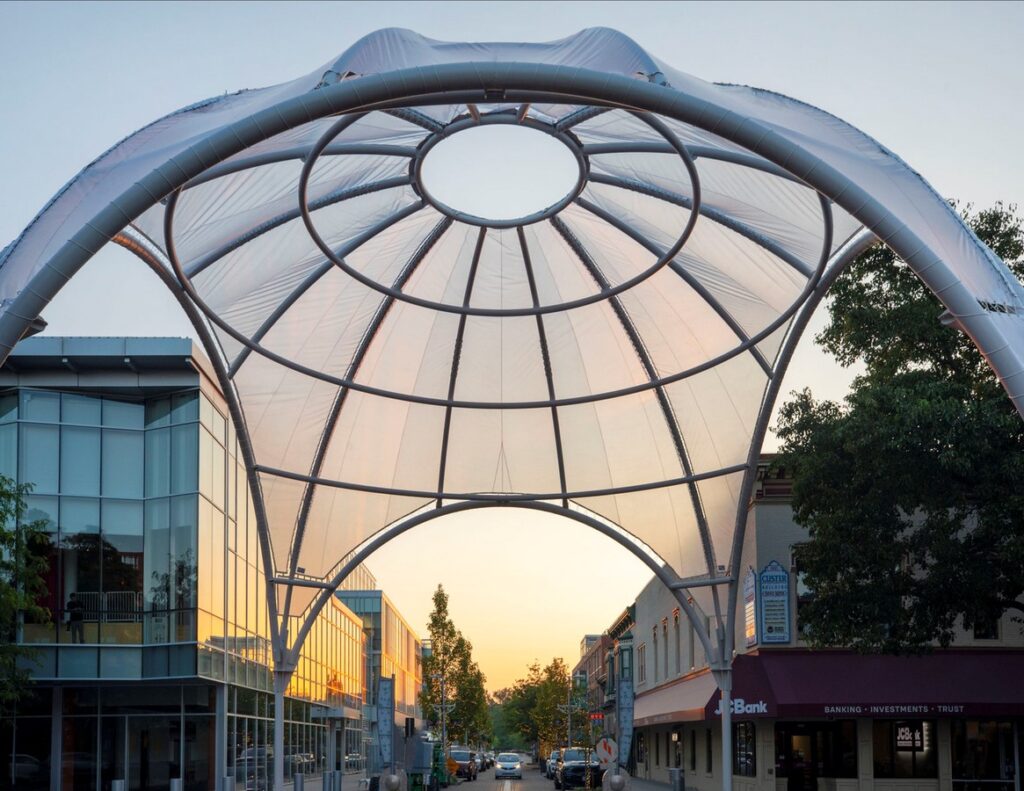
Inspired Design Elements
The canopy-like structure of InterOculus reflects the vibrancy and diversity of Columbus’s community. Drawing inspiration from sources as varied as Rome’s Pantheon, local landmarks like the archway at the Indiana State Fair, and cultural icons such as ice cream sundaes and indigenous wigwams, the design celebrates the city’s rich heritage and spirit. Its inclusive design invites individuals of all backgrounds to come together in a shared space of cultural exchange and celebration.
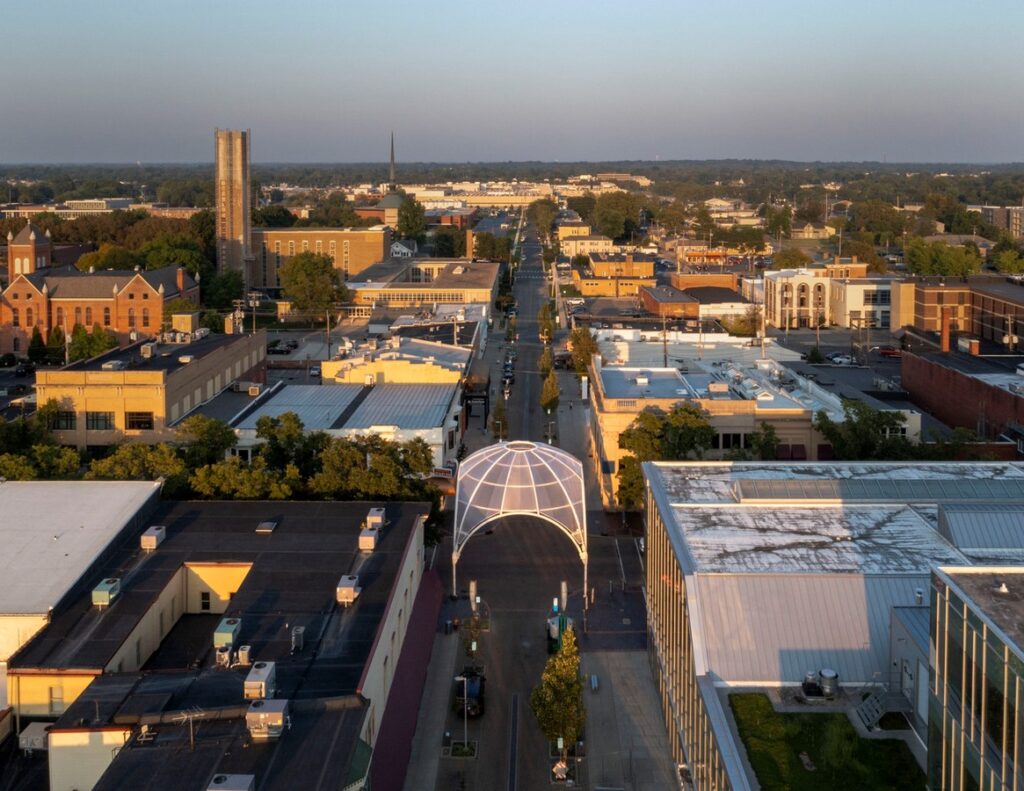
Sustainable and Equitable Transformation
InterOculus embodies principles of sustainability and inclusivity by repurposing existing street pole foundations and leveraging existing infrastructure. By recycling materials and incorporating elements of suspension, projection, and illumination, the project creates an egalitarian destination that revitalizes downtown Columbus both day and night. PAU’s design encourages the community to actively engage with the structure, fostering a sense of ownership and pride in the city’s historic downtown.
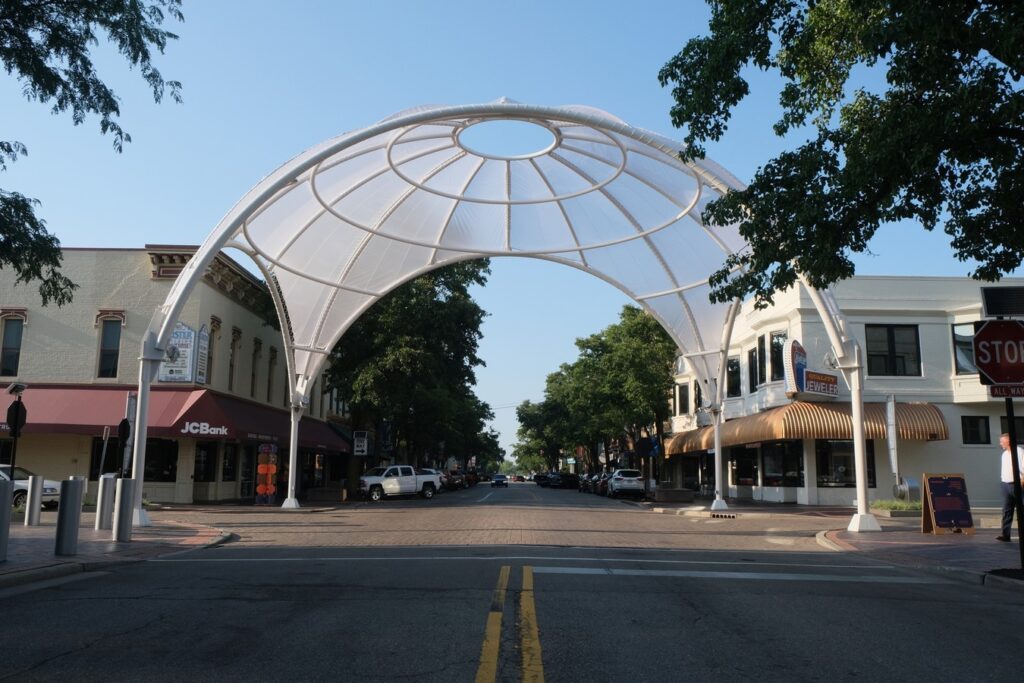
A Call for Urban Renewal
Ultimately, InterOculus serves as a catalyst for broader urban renewal efforts in Columbus, advocating for permanent public spaces that unite diverse communities and foster positive social interaction. By encouraging residents to embrace their city’s heritage while envisioning its future, PAU’s project embodies the transformative power of thoughtful design in creating vibrant, inclusive, and resilient urban environments.


